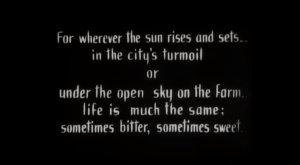Film analysis#2 The Sixth Sense
The Sixth Sense was number 89 on AFI’s Top 100 list of movies from the last 100 years. When this film was first released in theaters it was number one at the box office for a solid 5 weeks and raked in 40 million dollars (Atlantic). The reason behind The Sixth Sense’s immense success is mostly due to how well they pulled off the twist at the end. This project would analyze how the story is told in The Sixth Sense following the genre of horror from the perspectives of narrative structure, mise-en-scene, shots, sound&music, and editing.
The biggest feature of this film is the complexity of its narrative structure. The director divides into two storylines, one is the romantic story between Malcolm and his wife and another is Cole and his mother. The narration is developed between the two storylines. Early clues make audience understanding of the film into confusion. Audiences will completely understand the whole story after the disclose at the end of this film. In this film, the director used temperature several times. There are times when the temperature drops and the characters breathe white. Among them, when Malcolm approaches his wife, she wraps her shawl tightly around her in her sleep, a clue that Malcolm is dead. But we won’t know the truth until we get to the end. Most viewers will be puzzled by this clue. On the whole, the film is chronological. With the experience of Cole and Malcolm and the passage of significant time, the narrative moves from being confined to omniscience.
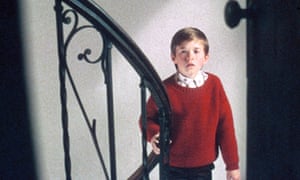
In the film, you see many different scenes where the director uses the style of low-key lighting in order to emphasize the dark or creepy moments that are either currently happening, or in the transition stage of close to happening. By the director doing this I feel like he does a great job in isolating the thrill in the movie and leaving his audience on the edge of their seat in desperation to know the upcoming events. Horror movies take a lot of time in working with the lighting in order to always give a darker/overcast type of look to give a night impression throughout the entire movie. For example, whenever Cole runs into his ghosts the lighting gets really dark and the violins in the background get louder. “The unusual lighting causes tension in the audience” (Fu). Also, M. Night Shyamalan has particularly made the costume of Kyra’s mother so impressive and symbolic. In the funeral scene, Kyra’s mother wears the red costume that makes her stands out of the crowd in many scenes of the film and especially in the funeral scene. Visually, it forms a sharp contrast between Kyra’s mother and others who all wear black costume, giving a deeper message to the audience about Kyra’s death and adding some weird and horrifying atmosphere to the story.
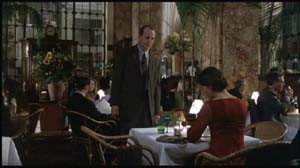
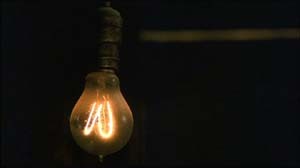
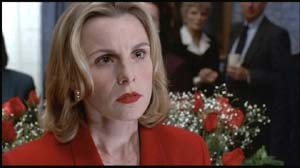
While using shots, M. Night Shyamalan makes their shots to convey varied messages and emotions to the audience. For example, in the magic scene when Malcolm talks to Cole, there uses a tracking shot that moves the camera to Malcolm. While moving, the audience only could see Malcolm on the middle of the screen talking to someone in the chair. When the shot shifts to Cole, Shyamalan makes the audience a little confused about this “magic” moment and therefore pave a deeper clue for the existence of Malcolm. Then, Shyamalan uses a lot of continuity editing in many scenes to create a sense of smooth and flow for the story. For instance, in the scene of Cole is trapped by the other two boys, the shots of Cole’s mother’s going upstairs create a high level of continuity that makes the body actions of the character natural. Besides, I also noticed the zoom shot in the funeral scene when Kyra’s father sits in front of the tape. Shyamalan seems to use a dolly shot that makes the facial expression of the man visually moves closer to the audience, which allows the audience to observe the emotional dynamics of Kyra’s father while looking and hearing the sound of the poison being poured to Kyra’s soup.
In the opening of the film, you can hear an eerie sounding violin playing and the theme of classical music carries on throughout the film. The high pitched whining of the violins really seems to put people on edge and adds to the suspense of the situation. The director uses a various amount of sounds, especially in pop up scenes or scenes that at one point lead up to being a thriller or horror scene.
This film is said to be one of the great 100 scenes and I can easily see why. The director does a very well job while making the movie when it comes to stay on track and is very persistent with the storyline. by the director doing this, I feel like he reduces the confusion that can be easily assumed in a movie that jumps around a whole lot. By analyzing films like these we gain a deeper understanding of what it takes to create a great film. By using specific vocabulary it helps us understand what the words truly mean deeper than just a definition. We are also all on the same page when it comes to an understanding of terminology and gets to practice what we are taught in class.
Sources:
https://oneroomwithaview.com/2017/01/17/a-love-letter-to-the-sixth-sense/
https://vialogues.com/vialogues/play/27037 (Links to an external site.)
http://baratieri.tripod.com/id26.html (Links to an external site.)
https://www.varesesarabande.com/products/sixth-sense-the-vinyl
http://www.mediaknite.org/wp-content/uploads/2017/03/Sixth-Sense-Scene-Analysis-1.pdf
Sims, David. “How ‘The Sixth Sense’ Conquered Hollywood in 1999.”
The Atlantic, Atlantic Media Company, 6 Aug. 2019, www.theatlantic.com/entertainment/archive/2019/08/how-sixth-sense-conquered-hollywood-1999/595558/.
Nichols, Mackenzie. “’The Sixth Sense’ Turns 20: M. Night Shyamalan and Haley Joel Osment Tell All.” Variety, 2 Aug. 2019, variety.com/2019/film/news/the-sixth-sense-turns-20-m-night-shyamalan-haley-joel-osment-1203259434/.
https://www.theguardian.com/film/filmblog/2014/oct/22/the-sixth-sense-film-frightened-me-most-sian-cain




